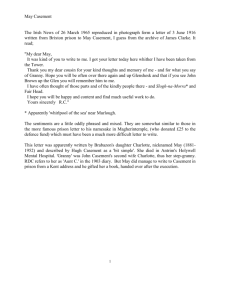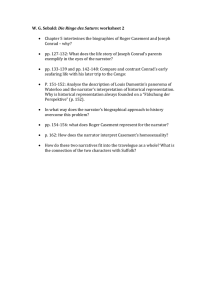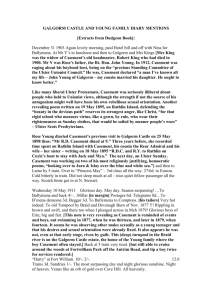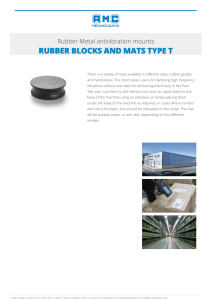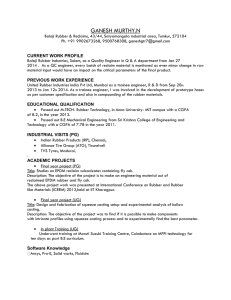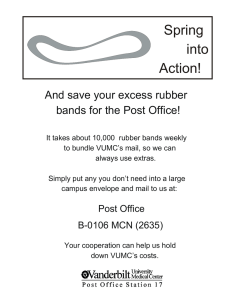Putumayo Indians to work on Amazon rubber plantations, Roger Casement... upriver city of Iquitos. While there he interviewed local officials... Activity 8. Amazon Journal of Roger Casement (1906)
advertisement
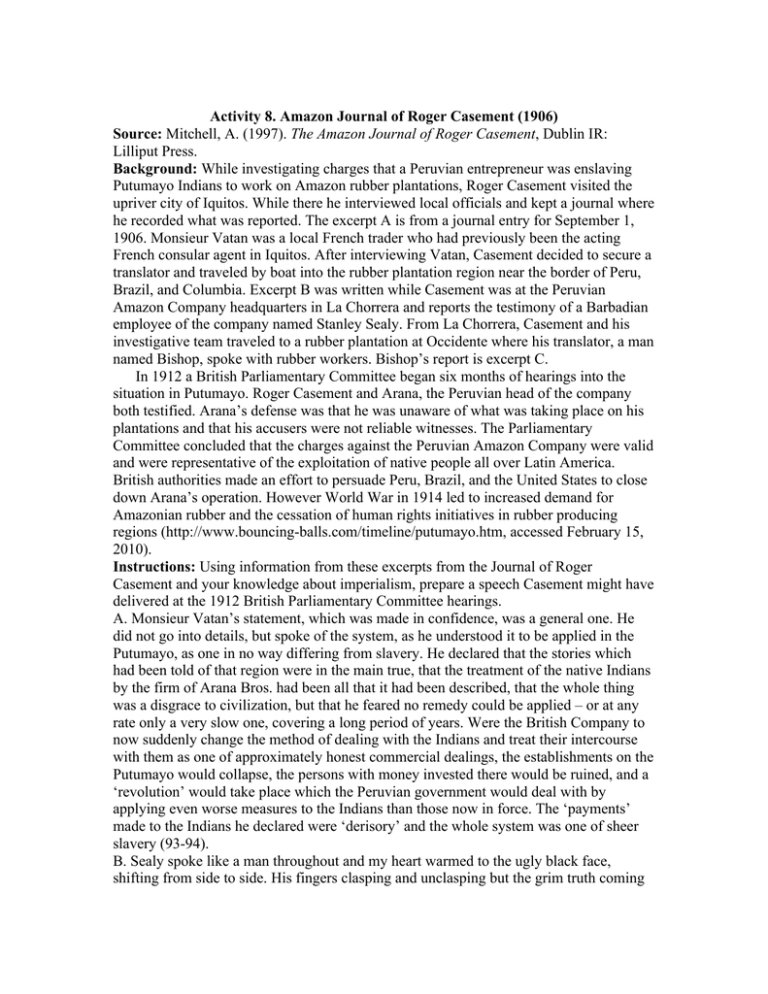
Activity 8. Amazon Journal of Roger Casement (1906) Source: Mitchell, A. (1997). The Amazon Journal of Roger Casement, Dublin IR: Lilliput Press. Background: While investigating charges that a Peruvian entrepreneur was enslaving Putumayo Indians to work on Amazon rubber plantations, Roger Casement visited the upriver city of Iquitos. While there he interviewed local officials and kept a journal where he recorded what was reported. The excerpt A is from a journal entry for September 1, 1906. Monsieur Vatan was a local French trader who had previously been the acting French consular agent in Iquitos. After interviewing Vatan, Casement decided to secure a translator and traveled by boat into the rubber plantation region near the border of Peru, Brazil, and Columbia. Excerpt B was written while Casement was at the Peruvian Amazon Company headquarters in La Chorrera and reports the testimony of a Barbadian employee of the company named Stanley Sealy. From La Chorrera, Casement and his investigative team traveled to a rubber plantation at Occidente where his translator, a man named Bishop, spoke with rubber workers. Bishop’s report is excerpt C. In 1912 a British Parliamentary Committee began six months of hearings into the situation in Putumayo. Roger Casement and Arana, the Peruvian head of the company both testified. Arana’s defense was that he was unaware of what was taking place on his plantations and that his accusers were not reliable witnesses. The Parliamentary Committee concluded that the charges against the Peruvian Amazon Company were valid and were representative of the exploitation of native people all over Latin America. British authorities made an effort to persuade Peru, Brazil, and the United States to close down Arana’s operation. However World War in 1914 led to increased demand for Amazonian rubber and the cessation of human rights initiatives in rubber producing regions (http://www.bouncing-balls.com/timeline/putumayo.htm, accessed February 15, 2010). Instructions: Using information from these excerpts from the Journal of Roger Casement and your knowledge about imperialism, prepare a speech Casement might have delivered at the 1912 British Parliamentary Committee hearings. A. Monsieur Vatan’s statement, which was made in confidence, was a general one. He did not go into details, but spoke of the system, as he understood it to be applied in the Putumayo, as one in no way differing from slavery. He declared that the stories which had been told of that region were in the main true, that the treatment of the native Indians by the firm of Arana Bros. had been all that it had been described, that the whole thing was a disgrace to civilization, but that he feared no remedy could be applied – or at any rate only a very slow one, covering a long period of years. Were the British Company to now suddenly change the method of dealing with the Indians and treat their intercourse with them as one of approximately honest commercial dealings, the establishments on the Putumayo would collapse, the persons with money invested there would be ruined, and a ‘revolution’ would take place which the Peruvian government would deal with by applying even worse measures to the Indians than those now in force. The ‘payments’ made to the Indians he declared were ‘derisory’ and the whole system was one of sheer slavery (93-94). B. Sealy spoke like a man throughout and my heart warmed to the ugly black face, shifting from side to side. His fingers clasping and unclasping but the grim truth coming out of his lips. Says he had flogged Indians himself – many times – very many times – at Abisina; at Savana, always because he was ordered to by the Chief (company foreman) – who decided which Indian was to be flogged. It was always for not bringing in rubber – sometimes 25 lashes, some 12, some 6; and some only 2 even - according as the rubber was ‘short.’ The Indians would ‘lie down of themselves’ and take the flogging . . . Their backs – or buttocks rather – would be cut – often badly cut – and so the ghastly tale came out. The Indians were not happy and brought the rubber because they were afraid . . . He had seen women flogged just like men (122-123). C. This man and another, whom Bishop pointed out to me, had declared to him, he averred, that flogging them for rubber had not stopped, . . . and that quite recently beating them with the flat of machetes across the shoulders and backs was taking its place. This latter form of torture, though very painful, left no marks. Also they were now submitted to a new form of punishment. When they were down at the riverside washing the rubber, one of the Racionales (company employees) stood over them and men would be held under water by him and his muchachos (Indian helpers) and half drowned by this process” (146-147).
